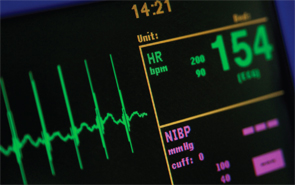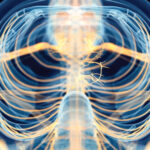
Heart rate variability is a feature of ANS dysfunction, although it is not universal in all patients with RA.
Image Credit: RHIMAGE/shutterstock.com
A growing understanding of the immunomodulatory effect of the autonomic nervous system (ANS) is edging closer to having clinical applications that could one day benefit patients with rheumatoid arthritis (RA). Researchers pursuing this as an alternative path to biomarkers are investigating whether autonomic status can be used to predict response to therapy.
Seattle-area rheumatologist and researcher Andrew Holman, MD, describes the alternate path he is investigating as “following the bread crumbs” left by other researchers who have been investigating the cross talk between the ANS and inflammation for many years.
“I have been interested in where these bread crumbs lead ever since Elenkov and Wilder’s article in 2000 that linked the sympathetic nervous system with the immune system and neurosurgeon Kevin Tracey’s 2002 article in Nature that described the cholinergic antiinflammatory reflex.1,2 And then when I heard Kevin Tracey’s lecture about ‘mind over immunity’ that he delivered to a standing-room-only crowd at the 2004 ACR/ARHP Annual Meeting, I was hooked,” he says.
Dr. Holman has been conducting research for several years exploring whether a patient’s autonomic status, as measured by heart rate variability (HRV), can be predictive of which patients are likely or unlikely to respond to anti-TNF therapy. He uses a proprietary five-minute, noninvasive device that measures HRV, which is manufactured by Omegawave LTD in Finland. It is the same device that several National Football League teams and the Manchester United Football Club use to measure their players’ cardiac, metabolic and central nervous system readiness for a game.

Dr. Holman
Dr. Holman’s one-year, double-blind, prospective, proof-of-concept study with 33 patients, published in 2008, found that those who have a poor HRV profile, defined as low parasympathetic and high sympathetic tone, were more likely to have a poor response to an anti-TNF agent.3
The exploratory study assessed clinical response at 6, 12, 26 and 52 weeks by using ACR20/50/70 scores and DAS28 response. At one year, patients who had a low parasympathetic tone had no chance of achieving ACR70, a 12% chance of ACR50 and a 40% chance of ACR20. Those with a high parasympathetic score had a 65% chance of an ACR70 response to the therapy at one year. “For a parasympathetic measure to predict ACR50 biologic response at 52 weeks, the positive predictive value was 87.5%, the negative predictive value was 88.0%, and the relative risk was 7.292 (p less than 0.001),” he says.
